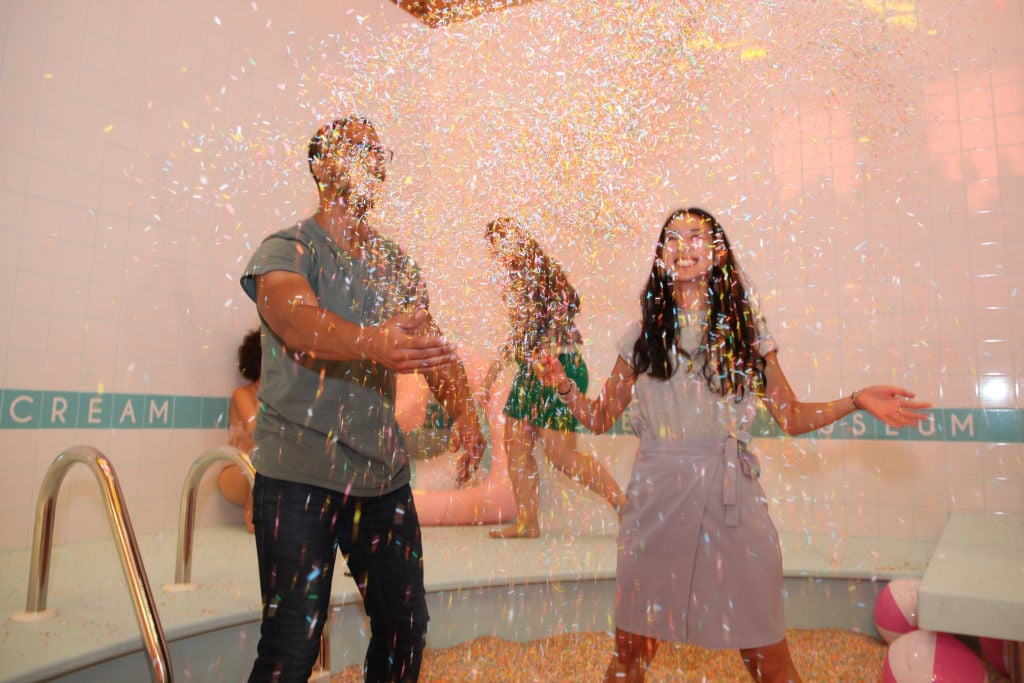
The year is 2027. Your cousins are in town. You want to take them on an entertaining cultural excursion. So you pile into your self-driving car and head out, not to your local art museum—that would be so 2016—but to the Museum of Ice Cream, a grownup theme park custom-made for Instagram.
Is this the future of American culture? A new study suggests that it might be. Audiences are more likely to view a visit to a street fair as a cultural experience than a trip to the opera or the ballet, according to Culture Track 2017, a report by marketing firm LaPlaca Cohen and research firm Kelton Global. The study’s authors say that the definition of culture—long an avenue of self-cultivation that was synonymous with refinement—has democratized so much that the word may soon hold little significance at all.
“Audiences nationwide are breaking down cultural norms and redefining them,” Maggie Hartnick, the managing director of LaPlaca Cohen, said in a statement. “Now culture can mean Caravaggio, Coachella, Tannhäuser, or taco trucks.” In fact, the survey’s respondents said they were more loyal to restaurants, bars, and retail stores than they were to cultural organizations.
Analytics courtesy of LaPlaca Cohen and Culture Track 2017.
The study’s authors examined 4,035 responses to an online survey of people who had participated in at least one cultural activity in the past year. (The respondents accurately reflected the democratic makeup of the US, according to the survey’s authors.)
They found, perhaps unsurprisingly, that cultural consumers want to be entertained more than they want to be edified. The number-one reason for attending a cultural activity, cited by 81 percent of respondents? Having fun. (“Interest in the content” and “experiencing new things” came in second and third.) The biggest barrier to participating in cultural activities, on the other hand, was a feeling that the activity or institution is “not for someone like me.”
The survey suggests that in order to expand their audiences, museums will likely have to increasingly offer themselves up as spaces for socializing rather than havens for quiet contemplation or study.
Asked to describe their ideal cultural activity, those surveyed most commonly cited the words “social” (34 percent of respondents), “interactive” (32 percent), “lively” (31 percent), and “hands-on” (30 percent). Only 20 percent described their dream cultural experience as “reflective.”
Some institutions, like the Indianapolis Museum of Art—which organized the US Pavilion at the 2011 Venice Biennale—have already embraced this trend in dramatic fashion. It rebranded itself as Newfields: A Place for Nature and the Arts earlier this year and now promotes itself as a full-service cultural destination complete with a beer garden, performance space, and onsite preschool (as well as a museum).
Analytics courtesy of LaPlaca Cohen and Culture Track 2017.
The impulse to create shows for Instagram has also already begun to infiltrate museums—and not only those dedicated to ice cream. As the survey makes clear (for good or ill), people respond to what they see online. For the first time since Culture Track began its survey in 2001, respondents said social-media advertising was more influential than print advertising.
At the same time, there are signs that cultural institutions can successfully cultivate new audiences without having to build sprinkle swimming pools or paper-lantern labyrinths.
Below are additional notable data points from this year’s Culture Track study.
- Museum audiences are shifting online. Eighty-one percent of respondents expressed a desire to make digital experiences part of their relationship with art museums.
- Membership is less appealing. People are increasingly less likely to become paying members of museums. Less than a quarter of audiences surveyed are members of a cultural institution.
- Altruism motivates. Audiences said they would be most likely to join a loyalty program in order to support a good cause, rather than to get discounts or perks.
- Museums shouldn’t take donors for granted. Although 41 percent of respondents said they planned to donate to a cultural organization within the next year (up from 33 percent in 2011), the arts were not a particularly appealing philanthropic cause. In fact, it ranked 11th on a list of 17 charitable causes. (Children, religion, health, and animal welfare were the top four.)
- Corporate sponsorship actually works. Although it’s difficult to trace the impact of a small corporate logo on a museum brochure, 50 percent of respondents said they would be more likely to patronize businesses that sponsor cultural institutions than those that don’t.
Analytics courtesy of LaPlaca Cohen and Culture Track 2017.
Analytics courtesy of LaPlaca Cohen and Culture Track 2017.